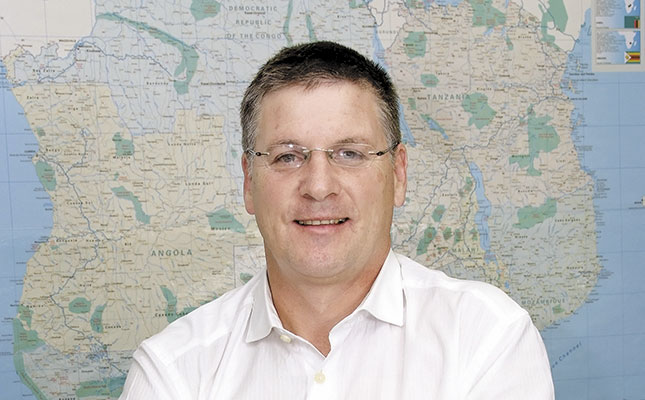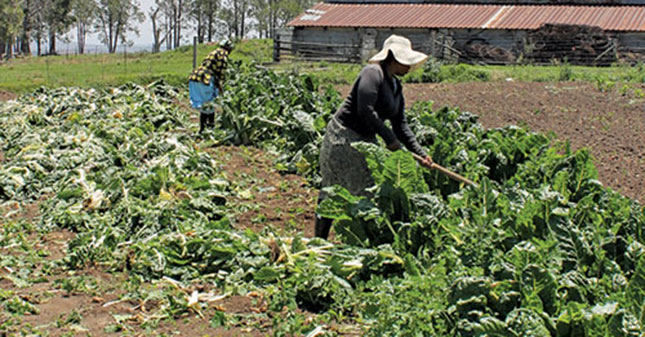
Photo: Courtesy of Transnet Ltd
What is the objective of the port expansion?
KwaZulu-Natal already enjoys a competitive advantage over the rest of the country – with Durban as the busiest port on the continent and Richards Bay recording the highest volumes of bulk cargo in South Africa. The Durban Dig-Out Port (DDOP) will give the province a definitive edge over others. It is a fundamental component of the Durban-Free State-Gauteng freight corridor that will unlock the country’s trade opportunities and boost long-term economic prospects.
READ:Packaging for fresh produce – get it right
It’s intended to play a major role in transforming our economy from a predominantly raw materials export-based economy to one focused on local manufacturing and beneficiated exports, with a commensurate creation of jobs. This is in line with the New Growth Plan’s target of creating five million jobs by 2020.
When will the construction begin and what is the anticipated cost?
Construction of the first phase is expected to start mid-2016, with the first container terminal operational in early 2020. The development will be done in a number of phases envisaged to take place over 30 years, with the expected completion of all phases in 2040.
What impact is the DDOP expected to make on the economy?
It’s estimated that it will create about 64 000 jobs during the construction phases and 28 000 full-time jobs when fully operational. During construction phases, approximately R23 billion will be realised in job-related income in KZN. Capital expenditure to construct the port will contribute about R47 billion to South Africa’s GDP. Fully operational, the DDOP will contribute around R56 billion a year to GDP. Benefits such as local skills development and local labour employment will have significant long-term impact.
In light of the fact that ships are getting bigger, how important is the DDOP to the future of the port?
The global shipping industry is seeing the advent of a new generation of longer, wider and deeper vessels. The latest can carry 18 000TEUs (Twenty-foot equivalent unit) and have a draft ranging from about 14,5m to 15,5m. These ships will require a modern, deep-water port and if the new one is not developed, South Africa won’t be able to compete with ports in the region who are heavily investing in infrastructure.
Will the costs of shipping from Durban Port rise as a result of the expansion project? If so, by how much?
The Durban Port and the DDOP will be two completely separate harbours, probably with different funding and operating models. There is still much work to be done to finalise these, and it’s too premature to speculate on the shipping costs. That being said, one of Transnet’s key goals is to reduce the overall logistics costs for the country.
Congestion is an ongoing problem. In May 2013, trucks transporting citrus faced two-day delays in offloading their cargo. What is the plan to reduce congestion and prevent it from escalating?
The delays were due to a system issue at the Durban container terminal. The Navis system has been functioning efficiently since then.
What are the plans to overcome increased traffic problems?
The DDOP presents a unique opportunity to plan and develop a greenfield shipping and logistics facility that adheres to the latest standards in port design. That will allow Transnet to develop it in a manner that integrates the facility into the city’s road and rail infrastructure in the most efficient and effective way possible.
Developing the DDOP from the ground up, according to international best practice in efficient port design, also gives us the opportunity to develop a facility that can cope with modern shipping and logistics requirements. The existing port was never designed with the size of modern container vessels in mind.
Moreover, the fact that Durban has gradually grown around the port for more than a century means that its supporting infrastructure could not be designed to cope with the facility’s existing and future road, rail and storage requirements. By designing the DDOP from scratch, Transnet will be able to integrate the facility into the city’s existing infrastructure in the most seamless way possible. This will ensure that the port copes with the projected container traffic we expect to pass through Durban over the next four decades.
What advantage does Maputo Port have over Durban, and is Durban at risk of losing its title of the busiest port in Africa?
The Maputo Port is a similar distance from Gauteng as the Durban Port. However, its inland rail and road infrastructure is considerably less developed than the logistics infrastructure that exists between Durban and Gauteng. Maputo also has several disadvantages, ranging from a lack of port infrastructure such as cranes and storage facilities, to the generally shallow depth of the port which constrains its ability to handle large vessels.
Although the port does handle some coal, motor vehicle and container shipments, it is more of a niche player in the region than the Durban Port. The fact that cargo from Gauteng also needs to pass through an international border en route to Maputo Port, also presents a challenge. At present, there is no clear risk that the Durban Port will lose its status, and certainly not to the Maputo Port.
To construct the DDOP, 16 small-scale farmers will need to be relocated from 40ha. When will the relocation plans be finalised?
Transnet is willing to enter into three-year contracts to allow farmers on the site to farm until early 2016, which is when the construction will start. It will move forward on the issue through a consultative engagement and has already taken the first step and reached out to both the farmers and their representatives to discuss this.
Phone Marc Descoins on 031 361 1281 or email [email protected] or visit www.transnet.co.za.
This article was originally published in the 28 February 2014 issue of Farmer’s Weekly.













